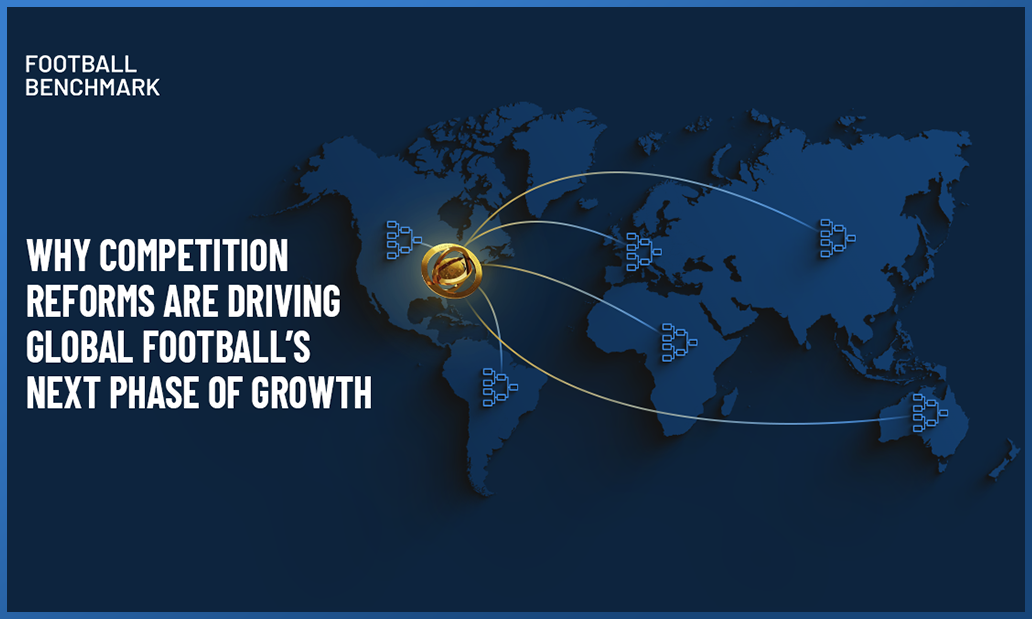
As the expanded FIFA Club World Cup kicks off this weekend, all eyes turn to one of the most talked-about topics in global football. The tournament, comprising 32 clubs representing every confederation, has sparked widespread debate. Much of the discourse focuses on the Club World Cup as a standalone disruption. But in reality, it is best understood not as an isolated competition, but as a high-profile example of a much broader trend taking shape across the global football ecosystem.
In recent years, every confederation has moved to reformat and expand its club competitions. Almost without exception, there are more tournaments, more participating teams, and stronger efforts to elevate regional structures, both in terms of sporting merit and commercial positioning. Whether it’s CAF’s African Football League, AFC’s revamped Champions League Elite, or CONMEBOL’s Libertadores and Sudamericana, the trend is clear: competition reform has become a strategic priority.
With the foundations already taking shape across confederations, the expanded Club World Cup may act as an accelerator, highlighting how the development of regional competitions is set to become one of the defining trends of the next decade.
The rise and revamping of regional competitions
Between 2015 and 2025, every confederation has either reformed or introduced new club competitions, with expanded participation a common theme.
For example, the AFC introduced a three-tier continental structure from 2024/25, including the Champions League Elite, Champions League 2, and Challenge League, alongside a calendar shift to align with global transfer windows. CONMEBOL has restructured the Libertadores and Sudamericana since 2017, expanding participation, aligning calendars, and linking the competitions via access routes to create a more integrated and commercially viable ecosystem. Meanwhile, in 2023, CAF launched the African Football League as an invite-only competition featuring eight teams, aiming to enhance commercial value and global appeal. This event is reportedly expected to be repeated and expanded.
In addition to confederations' flagship tournaments, cross-border club competitions are increasingly gaining traction around the world. In some cases, revamped regional events sanctioned by confederations serve both as preliminary qualifiers and as tailored responses to specific market needs—for example, the Concacaf Caribbean Cup and Concacaf Central American Cup. At the same time, other competitions are emerging outside the traditional structure, such as the Leagues Cup and the Arab Club Champions Cup.
Whether officially sanctioned or not, these cross-border competitions go beyond mere format innovation. They reflect a broader market-driven effort to elevate the sporting quality of competitions and unlock commercial value that domestic leagues alone may struggle to generate.
Therefore, what is often framed as a European conversation around competition reform and calendar alignment is, in reality, a global one. As regional competitions become more structured and strategically positioned, further elevated by the enhanced prestige and visibility that qualification to the expanded FIFA Club World Cup now offers, their role in driving football’s development is expected to grow significantly. These evolving platforms are increasingly central to shaping the competitive and commercial future of the global game.
The Club World Cup’s role in the global ecosystem
The expanded Club World Cup marks a significant shift from its previous format. Previously an annual, seven-team knockout tournament, it is now a 32-team event held every four years, featuring a group stage and guaranteeing clubs at least three matches. The restructured format offers greater exposure, more commercial opportunities, and a clearer position within the global calendar.
For non-European clubs, the potential implications are significant. In Europe, access to elite club competitions has proven to be a key driver of investment. Similarly, the opportunity to qualify for a global elite competition could incentivise increased investment at the regional level. Moreover, a strong regional ecosystem can serve as a growth platform for well-structured clubs that are held back by either a limited domestic market or the absence of a strong domestic league.
In addition, for players at non-European clubs, such a competition provides a gateway to global scouting networks by offering a rare window of international visibility. Much like the effect seen with standout performers at the FIFA World Cup, this type of platform can significantly accelerate a player's career trajectory, boosting transfer market value and raising professional standards across entire squads. This dynamic could act as a catalyst for increased player trading activity from regions historically underrepresented in outbound transfers to Europe, particularly Africa, Asia, and North America.
From continental reform to global growth
The expanded FIFA Club World Cup, alongside the rise of stronger continental competitions, signals the emergence of a more interconnected global football ecosystem. However, the success of this system will depend on broad stakeholder alignment around critical issues such as the international calendar and competitive balance—topics that have been widely debated and fall beyond the scope of this article.
If these challenges are effectively addressed, the long-term impact of the competition could extend far beyond offering a handful of non-European clubs occasional high-profile matches. It has the potential to serve as a catalyst for the development of more competitive regional tournaments, diminish the appeal of unsanctioned alternative competitions, and encourage greater investment in clubs. Ultimately, it could contribute to a more balanced global football landscape by driving investment in infrastructure and talent development across all continents.



